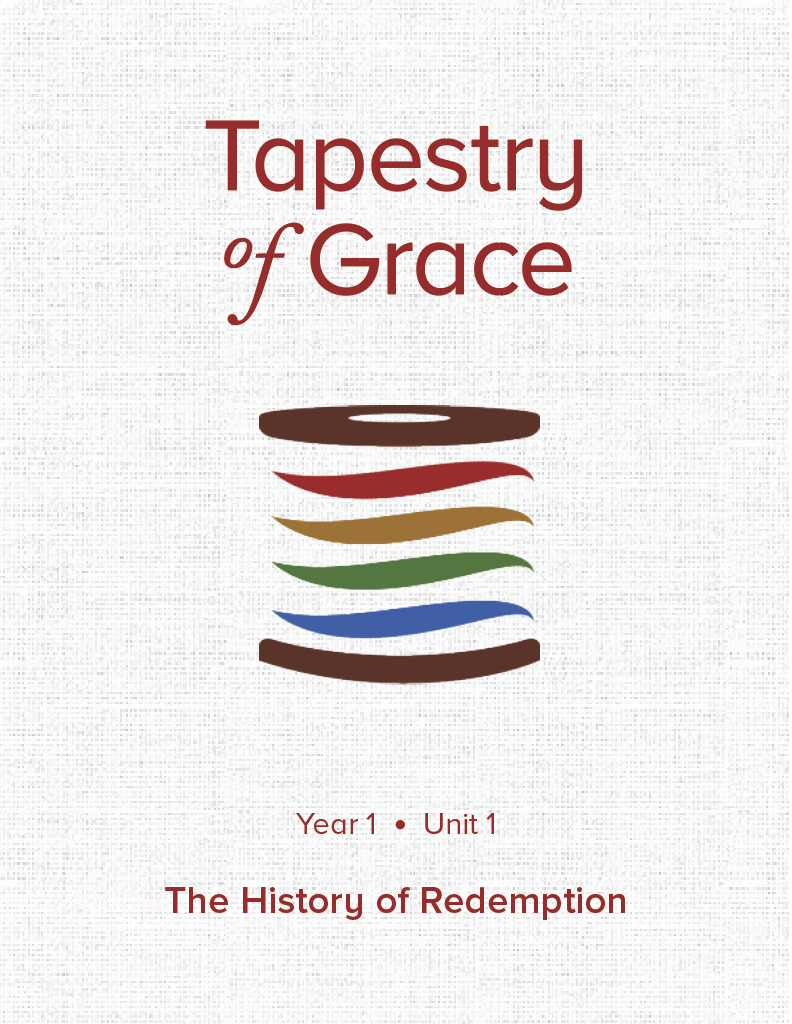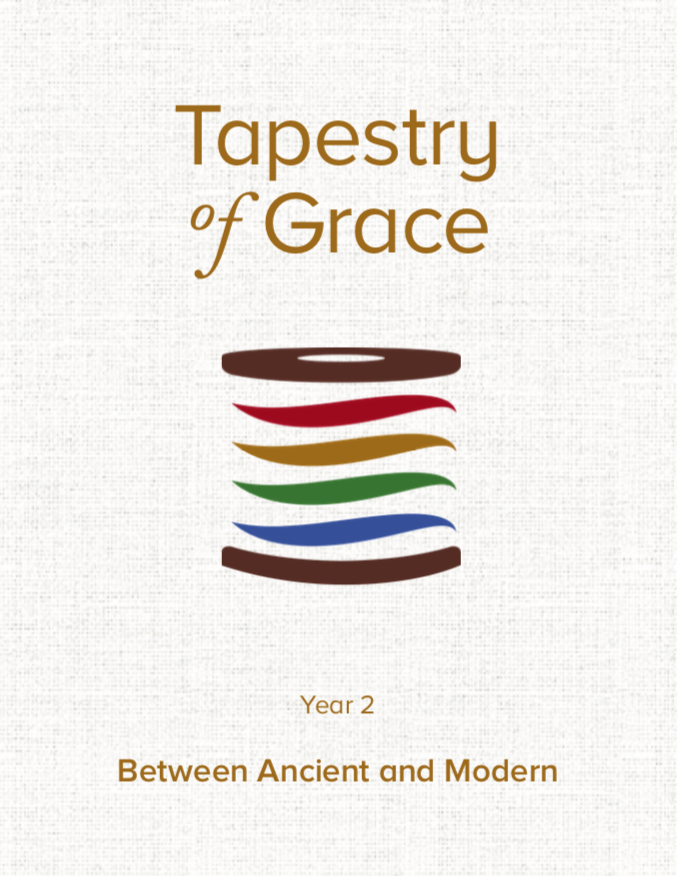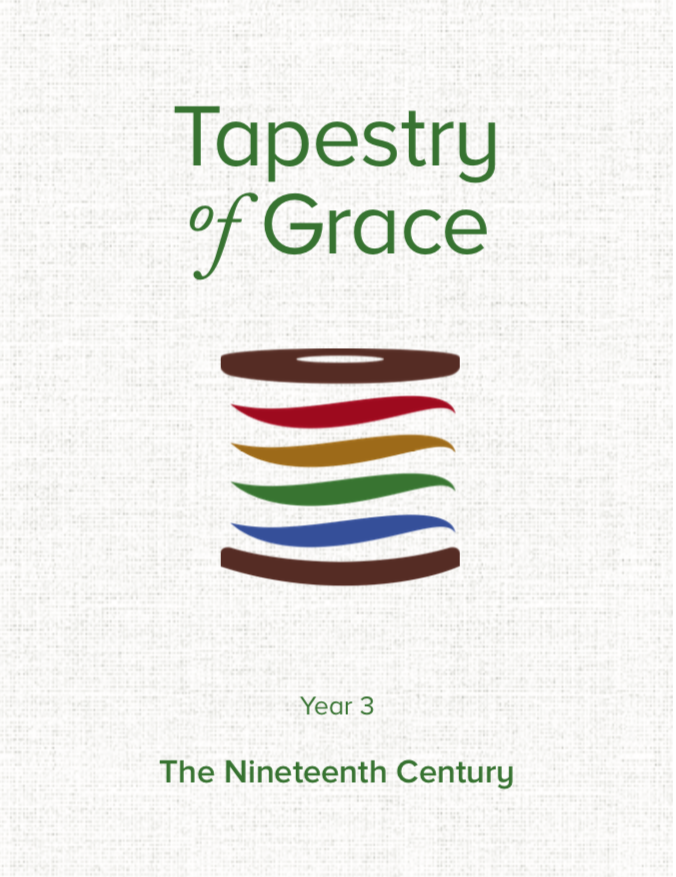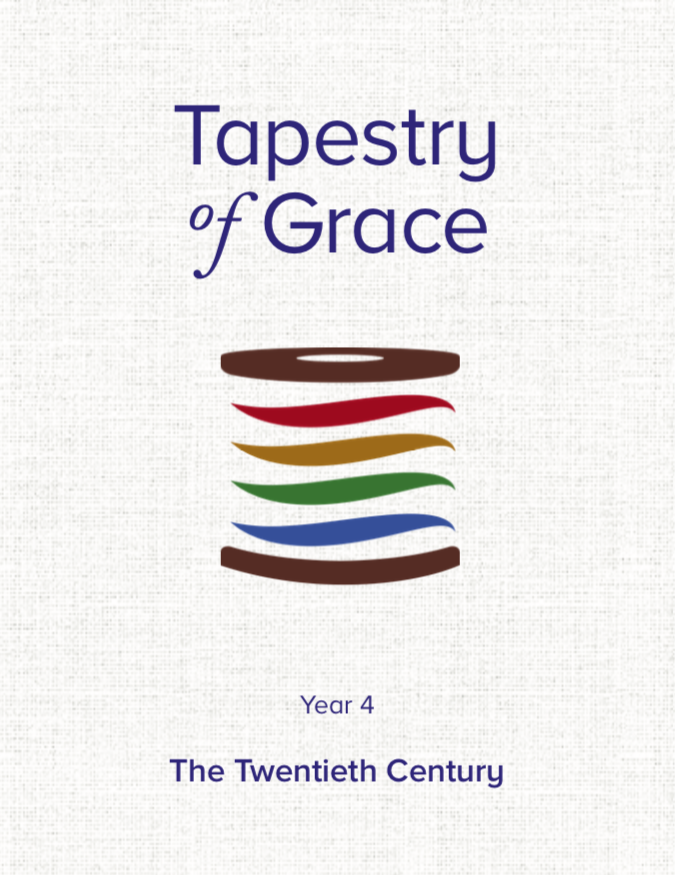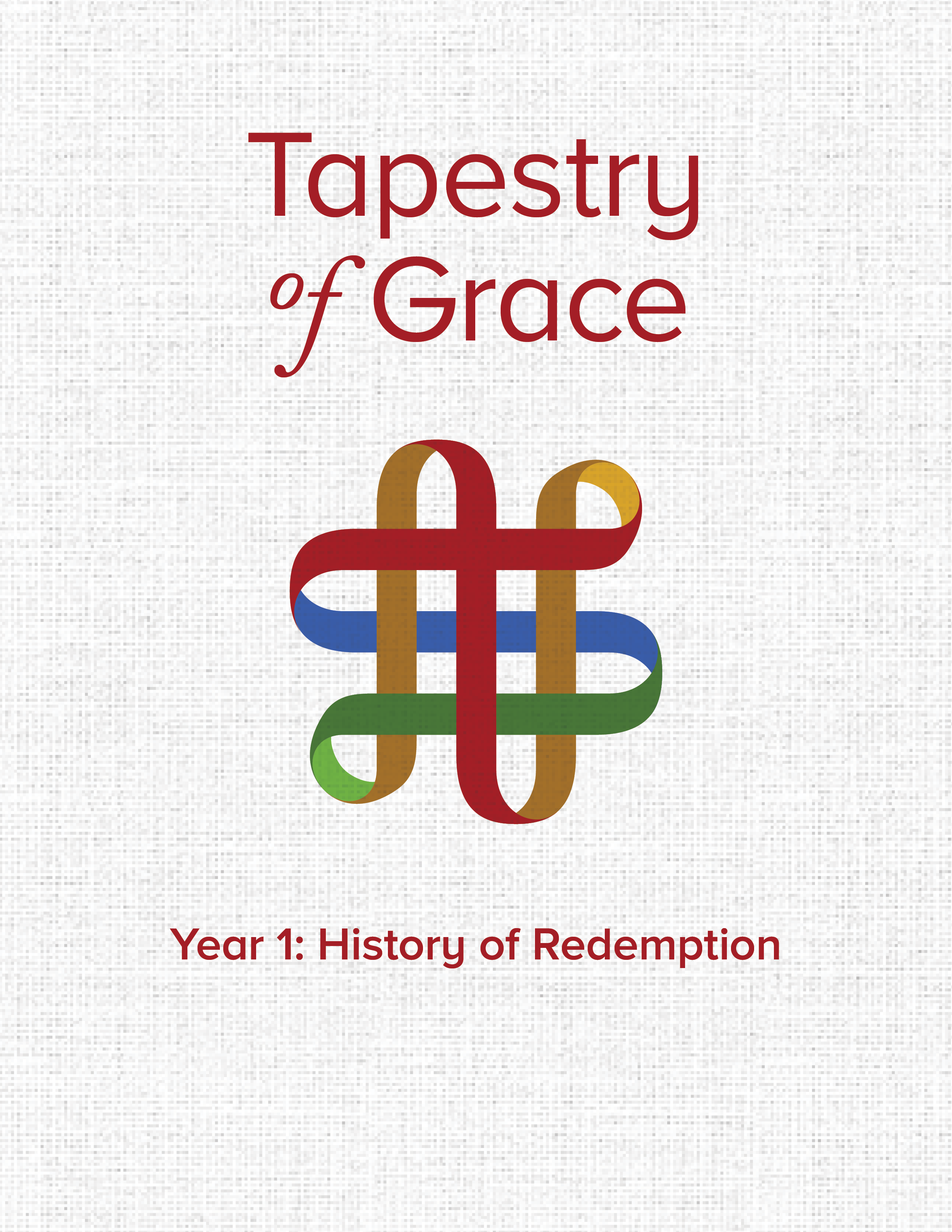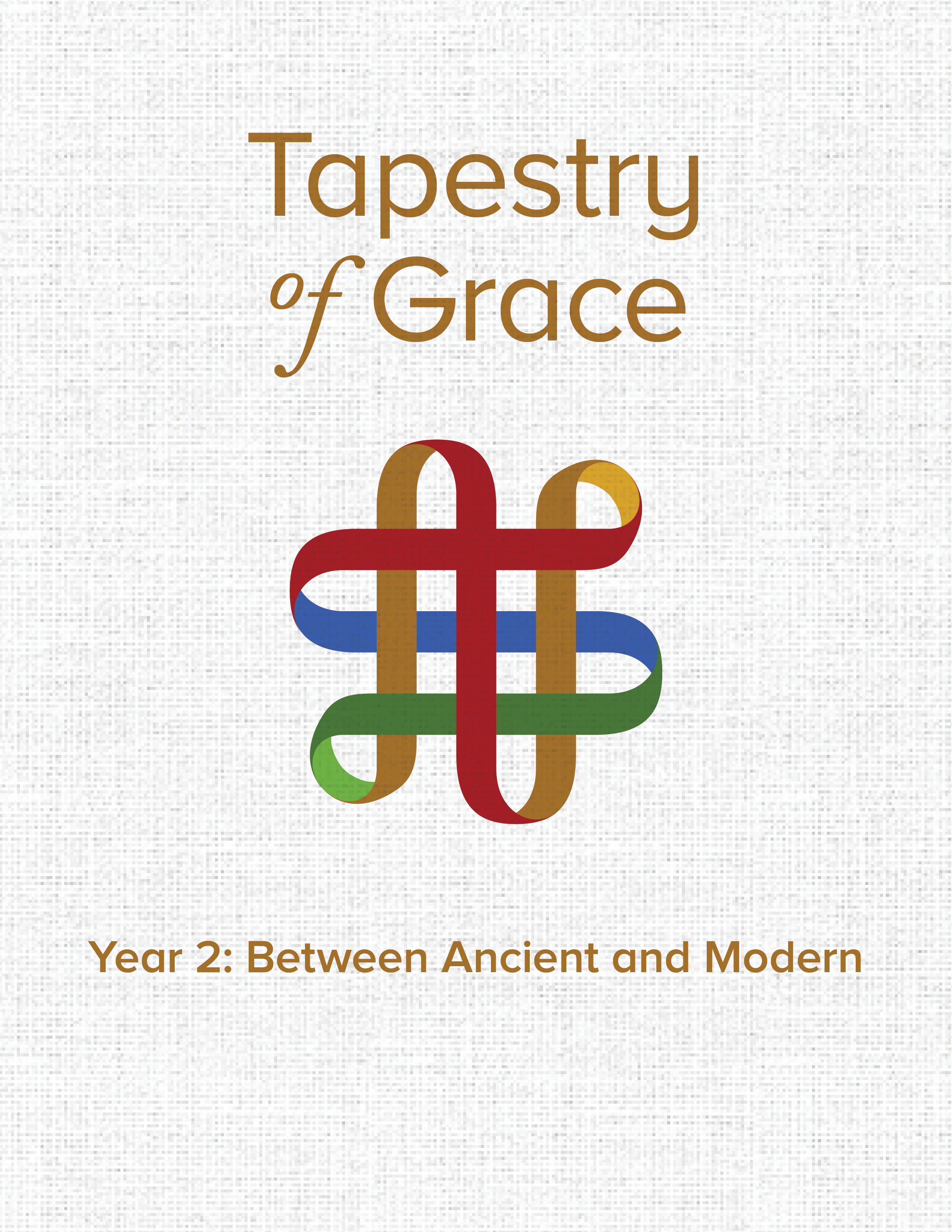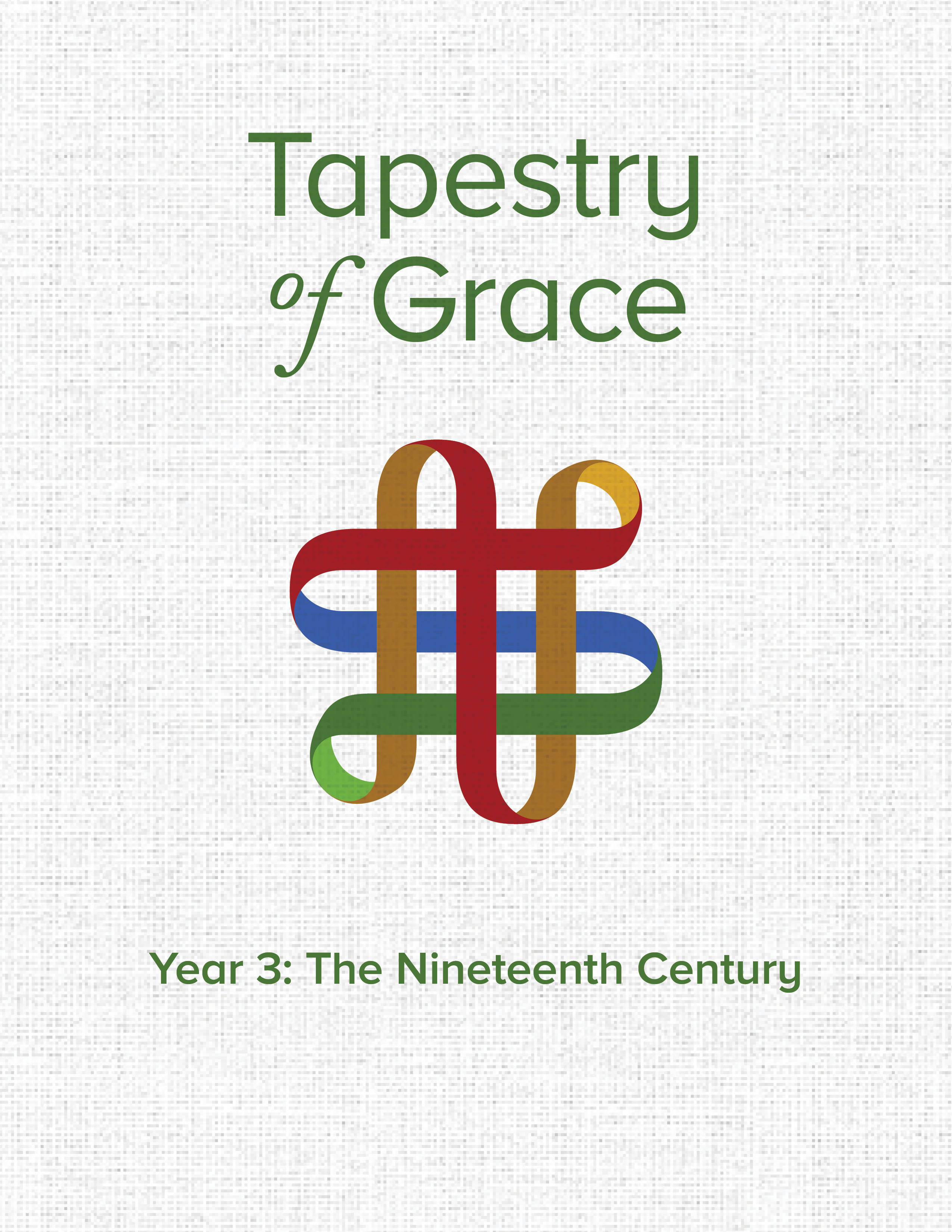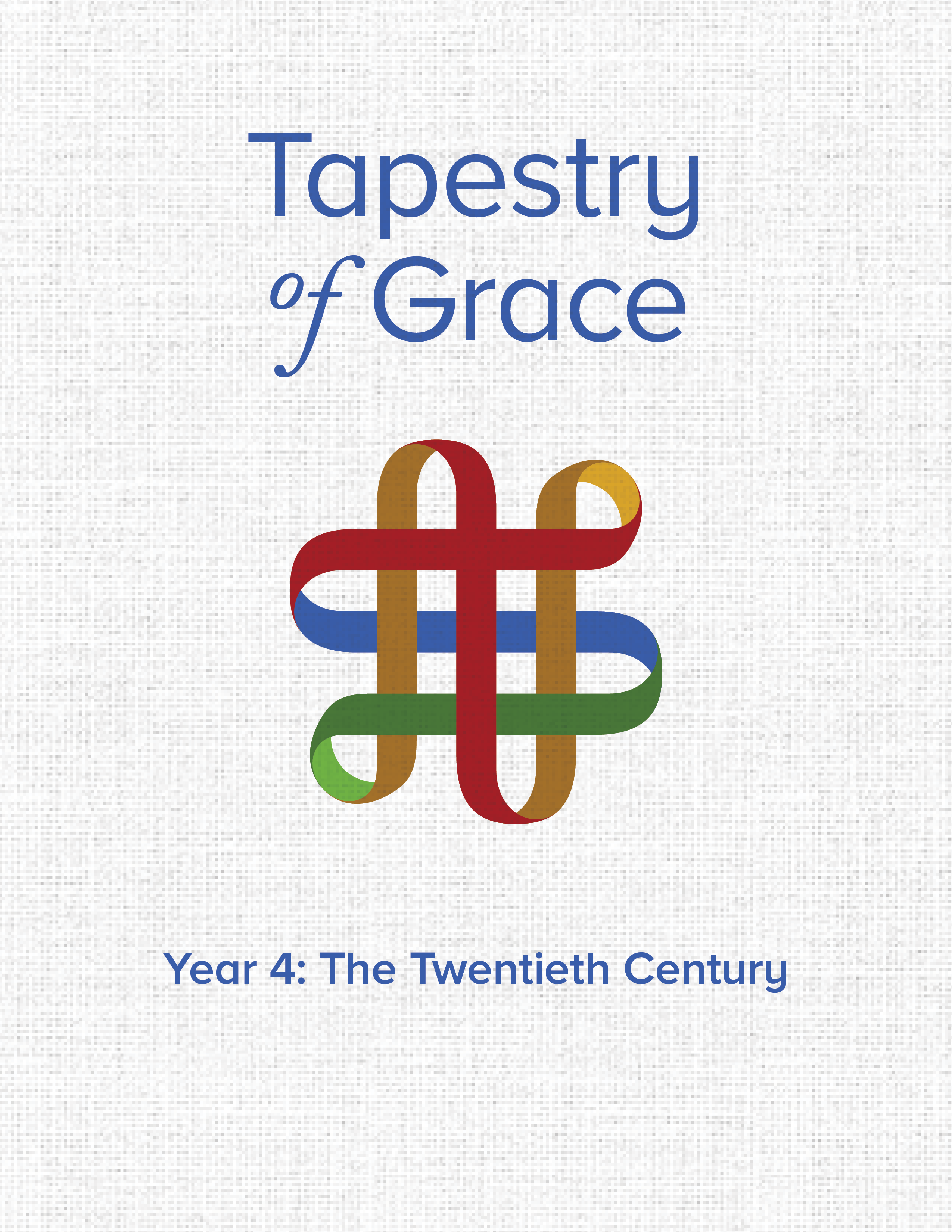
Welcome!
Tapestry of Grace first appeared as a homeschooling product in 1998. Since then, it has gathered up a long roll of awards and accolades, satisfied users and educated students. We are glad for this, but we also know that no curriculum works equally well for all students. The last twenty-something years have taught us that Tapestry of Grace will sing for some—and strike the wrong note for others. Therefore, we ask ourselves, “What can we do to help folks quickly discern whether Tapestry will sing for them?” We decided that we could do four things.
Encourage Goal-Setting
Tapestry of Grace is not for everyone, and it may not be right for you! We encourage you to prayerfully consider yourself and your homeschool for the coming year. What is the Lord leading your family towards this year? What would “wild success” look like for you and each of your children? What kind of program might concretely and specifically help move your home school in that direction?
Explain Tapestry of Grace
Most of the videos and FAQ’s below are designed to do this, but don’t hesitate to use the “Help!” button in the bottom right-hand corner of any page on our website if you don’t see an answer to your specific question!
Introduce Our Community
We have a vibrant, passionate, experienced, and relentlessly honest community. If you have questions, they have answers!
Provide Buying Recommendations
Our biggest buying recommendation is that you talk to one of our Presentation Specialists! This by-invitation-only role is entrusted to a handpicked few in our community whom we can trust to listen hard, love much, and save you money. They are free to consult, and they will help you articulate your homeschool plan and navigate our catalog to get the most useful material for the least cost.
Frequently Asked Questions I: Vision and Methods
How would you define Tapestry of Grace?
Tapestry of Grace is an eclectic program that uses several different educational methods to show students patterns of God’s personality and works in the ancient, dense, and colorful tapestry of human experience.
We try to teach a type of perception that Corrie Ten Boom once described in a poem that she loved to quote, which is called “My life is but a weaving”:
My life is but a weaving
Between my God and me.
I cannot choose the colors
He weaveth steadily.
Oft’ times He weaveth sorrow;
And I in foolish pride
Forget He sees the upper
And I the underside.
Not ’til the loom is silent
And the shuttles cease to fly
Will God unroll the canvas
And reveal the reason why.
The dark threads are as needful
In the weaver’s skillful hand
As the threads of gold and silver
In the pattern He has planned
He knows, He loves, He cares;
Nothing this truth can dim.
He gives the very best to those
Who leave the choice to Him.
In this poem, Corrie shows a conviction that the colors chosen by God in the tapestry of her life are not random. She has learned to see God’s personality in His works.
Our goal is to illuminate the greater tapestry of human history so that our students might see more of God’s gracious personality through the pattern of His design. We use a variety of approaches and modalities to achieve that goal, but we do not claim to be either wholly “classical” or wholly “Charlotte Mason.” We only aspire to be wholly Christian.
What do you mean by “Christian”?
We believe that God created time and space for His own glory, and that He is unfolding history to accomplish His perfect purposes for His glory, and for His people. Our passion for learning is a direct expression of our passion for God. He commands our full attention by His power, and He also attracts it by His beauty.
We believe that God is honored when we learn the truths that He has revealed in Scripture, in nature, and in history, whether such revealed truths fit into our preconceived notions or not. Our reason for studying history is to learn more from the experiences of others about God’s character and more about our own frailties and calling (1 Cor 10:11). We want God to receive His due in glory for all His mighty acts in history.
Our intention is to remain accurate and biblically oriented. Tapestry‘s Teacher’s Notes and Student Activity Page questions emphasize God’s sovereignty in history, frequently noting specific evidences of His work as far as we understand it.
It is our belief that children need to be led in “connecting the dots” of the events of history with both Scripture and a sense of the loving, just, active presence of God in world events. It is our aim to strengthen in them a sense of both humility (Psalm 8:3-5) and purpose (Ephesians 2:10) as they view the sweeping majesty of God acting in HIS story.
All men and women sin; no expression of the body of Christ or worldly community has been without sin. God has called us to love sinners and tell them His good news, not to judge them for their lost condition. Our position is that if children are taught to view the sins or errors of others with compassion and biblical interpretation, they will be warned of their own human tendency to sin, and will be positioned to become more compassionate, more accurate historians. More importantly, we believe they will be better positioned to both glorify and enjoy God.
We know by personal, painful experience in some of our own co-op classrooms over the years that a Tapestry education does not—cannot—guarantee salvation. However, we have done our best to ensure that if a child chooses to reject God after receiving this education, it will not be because he or she does not understand who God is, as He has described Himself in Scripture, and as He has consistently acted throughout history.
What do you mean by “Classical”?
The phrase “Classical Education” has been defined in a variety of ways among diverse groups of homeschoolers. For our understanding of the classical approach, we are indebted to Dorothy Sayers’s extremely influential essay, “The Lost Tools of Learning” . . . and, of the several elements that have been claimed as part of a classical education, we emphasize three:
1. A “Grammar, Dialectic, Rhetoric” Model of child development
Medieval educators taught students to speak Latin, debate in Latin, and persuade in Latin before they considered them ready for more advanced learning. The three disciplines of “grammar,” “dialectic,” and “rhetoric” composed the Trivium, which prepared scholars for the rest of the seven “liberal arts.” Modern scientists have discovered that these three modes of learning correspond to specific stages of child development.
Tapestry of Grace divides assignments into four distinct learning levels that span roughly four grades each. The overlap of grade levels is intentional, reflecting the fact that students’ brains shift to new learning levels in an unpredictable way and at different ages.

2. A “Great Books” Program
For Tapestry of Grace, the term “classical education” also means an education in the Great Books of world civilization, with an emphasis on western civilization for our many American students who have western heritage. We believe a liberal arts education includes broad and deep exposure to works by Plato, Shakespeare, Tolstoy, and others. Because of this, we study many of the Great Books of the Western Canon at the high school level. We also incorporate some classics of Eastern philosophy and literature, particularly in our study of the ancients.
3. Emphasis on “Socratic Discussion” for older children
The Socratic method (named for the ancient philosopher Socrates) involves teaching by asking questions that lead students to arrive at conclusions by reasoning for themselves, as opposed to “lecture style” where students are told what to believe.
All of our teacher’s notes for the dialectic and rhetoric levels have fully scripted Socratic discussions, offering a series of questions to ask in addition to possible answers your students might give. We also offer help via a teacher training video entitled “Holding Socratic Discussions.”
What do you mean by “Charlotte Mason”?
Tapestry of Grace uses many of Charlotte Mason’s methods: focus on character development and discussion-based learning, living books instead of textbooks, art and music appreciation, and hands-on activities.
We believe that the primary focus, especially in the early elementary grades, should be on character development. No amount of knowledge can make up for deficiencies in character. Rather than providing a lesson for each hour of the school day, we deliberately allow more time for unstructured play and the character development opportunities that arise from everyday conflicts with obstacles, siblings, or parents. For dialectic and rhetoric students, Tapestry of Grace weaves character instruction into our Socratic Discussion outlines.
To further encourage delight in learning and open-ended discussions that lead to character growth, we use living books. Students read engaging histories and literature written by good authors (including many classical authors) from a multiplicity of perspectives.
For all ages, Tapestry of Grace offers music and art appreciation, as well as hands-on learning activities.
Are you an integrated unit studies program?
Yes and no! We have an “integrated” format that follows the classic integrated unit studies approach. We also have the same content arranged in non-integrated subjects. Take your pick!
Do you offer a cyclical education?
Cyclical education is the idea of starting simple and letting your students’ understanding of the world around them grow as they do. Tapestry of Grace can take your family inch by inch over the glorious tapestry of history in four school years, then invite you to circle back around again. If your student was just seven years old the first time he saw the pyramids woven into God’s tapestry, he can revisit them at the ripe old age of eleven with a foundation of understanding upon which to build deeper knowledge. In a 12-year homeschool education, this approach gives your students the chance to explore the scope of history as many as three times, seeing more detail, depth, and richness each time they revisit that part of the pattern.
We will be happy to serve you with a single subject for a single learning level to cover a small span of history, but if you are interested in seeing as much of the pattern as possible, we do commend cyclical education as an idea worth exploring!
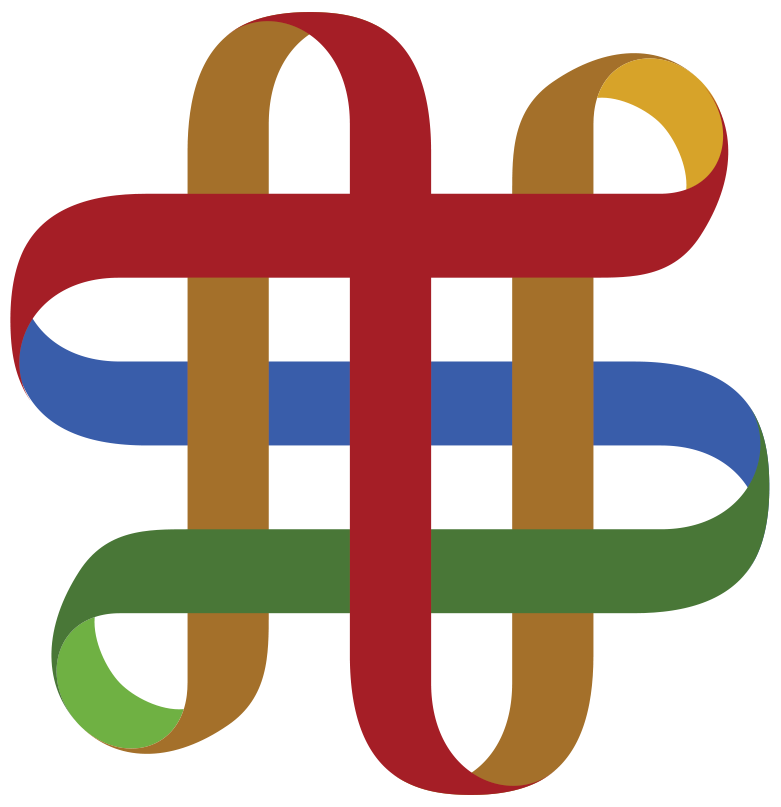
Frequently Asked Questions II: Curriculum components
What does the process of choosing Tapestry products look like?
The very simple version
Step 1: Define your goals for yourself and each of your children this year.
Step 2: select a time period and learning level(s).
Step 3: Choose your subjects.
Step 4: Based on your first three steps, decide whether it makes most sense to use our Stitches, Spools, or Integrated programs.
The more complex but also much more fun version
How do weavers make a tapestry, anyway? First, they begin with a cartoon (yes, really!)–a sketch on paper that they hope to recreate in colored threads. Second, they set up a loom, considering how broad and deep they want the finished cloth to be as they thread the loom both vertically and horizontally. Third, they select colorful silk or wool threads. Fourth and finally, they weave the threads together row by row to create the picture represented in the cartoon.
Start with your cartoon…
Weavers understand how important it is to have a sketch on paper. If you don’t know what picture you are trying to represent, how will you know when you are succeeding? So, first we encourage you to talk to God and reflect on yourself, your students, and your goals. We consider this so important that we have written several blog articles about it, if you care to explore them (BLOG IN TRANSIT: COMING SOON)!
Thread your loom…
How long and wide do you want your finished cloth to be? How many learning levels are you trying to cover (vertical), and how broad a span of human experience (horizontal)? Tapestry of Grace offers four learning levels and four distinct eras of history (which can be further separated into sixteen units of eight to ten weeks each).
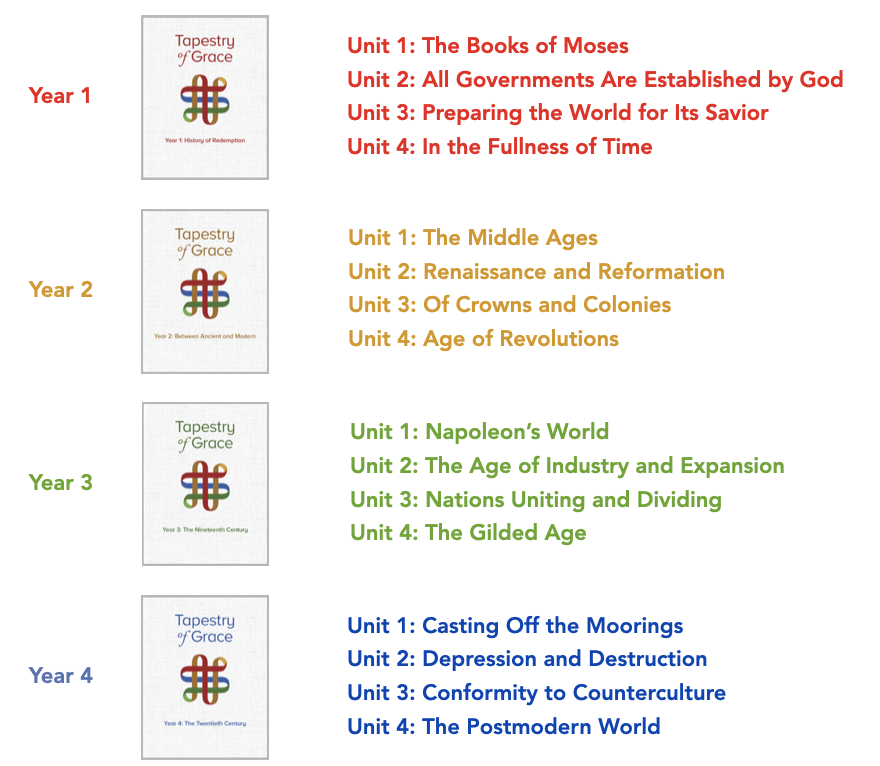

Choose your colored threads…
Which colored silk or wool threads (subjects) will you use to bring your picture to life? You can make a simpler picture with a few colors, or a richer and more nuanced picture with many colors. Tapestry of Grace offers twelve, some of which are partial, in development, or available only in high school.
- History
- Geography
- Writing
- Handwriting
- English Grammar
- Literature
- Fine Arts and Activities
- Government (high school)
- Philosophy (high school)
- Math (in development)
- Science (in development)
- Economics (partial)
- Worldview (including Bible Survey in Year 1 and Church History in Years 2-4)
What is “Stitches”?
You may already have a piece of cloth that you would like to embroider with just a few stitches of a colored thread. For example, maybe you have offered to teach Literature for a high school group and simply need a book study on The Odyssey. In such cases, Stitches may be able to help you mend a small gap.
Tapestry’s Stitches Studies are individual study guides composed of separate Student and Teacher materials. They are designed to be used either with our full Tapestry or as stand-alone products to help supplement another program. You can search the “Stitches” category on our shop and see our ever-expanding range of options, since Stitches are becoming available across several learning subjects, all learning levels, and all historical eras. They can also be mixed and matched to create studies that cover a few weeks…. months…. or years! It’s up to you.
Look under “Free Samples” in our shop to download some of our latest Stitches studies.
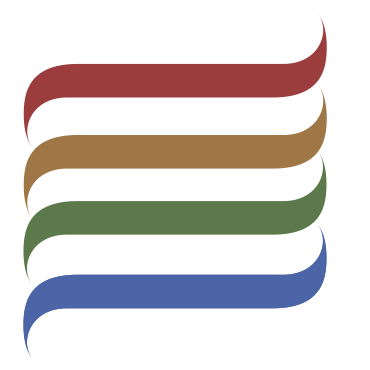
What is “Spools”?
If you’d like to sew a whole seam, you will need more than a few stitches’ worth of thread. Tapestry’s Spools Subjects Units are pre-organized units (or full years) of eight to ten weeks in a variety of subjects, all learning levels, and all historical eras. For example, you can buy Upper Grammar History for Year 2, or Dialectic Literature for Year 3, or a Full Rack that includes all the subjects for a given year and learning level. Both Student Manuals and Teacher Manuals are available.
Search for “Spools” in our shop according to your desired subject(s), learning level(s), unit(s), and year(s), or look for them under “Free Samples” in our shop.* As with Stitches Studies, you can mix or match Spools Subjects units according to your preferences.
*NOTE: Currently, we only have samples of Weeks 1-3 of Year 1 Full Rack Spools available, but these samples should give you a clear idea of what to expect in each individual Subject Spool because it includes all of them.

What is “Integrated”?
“Integrated” study, also known as the Unit Study approach, simply means that instead of studying each school subject separately, your students are learning them together and in relation to one another. For example, if your family is studying Egypt, your child will read a history book about Pharaohs, write a paragraph about the pyramids, and color a map of the Nile River. In the educational world, it has long been recognized that integration of subjects makes each one easier to understand, remember, enjoy, and connect to others.
Integrated studies in a homeschooling family can lead to an exciting context that we call “whole-family learning.” This means that each of your students studies the same topic at the same time, but each at his own learning level. In a week that has Egypt as its central topic, your youngest student learns about hippos and crocodiles in the Nile River, your middle child reads about why the Pharaohs built the Pyramids, and your oldest student is challenged to analyze the biblical view of Egyptian civilization within God’s plan of redemption. At each day’s end, when your whole family comes together around the kitchen table, everyone can enjoy participating in one educational conversation because everybody has been studying the same integrated subjects at different levels of understanding.
Click any cover below to go to that product in Tapestry Online, or click any price to go to the product in the store, or click any product sample to download. You can also download the free Simple Start Guide to learn about getting set up!

Do you know that you use a LOT of sewing analogies?
Oh, we do. 🙂 But consider all the fun you can have with thread-and-fabric jokes if you join us in our madness! Over the last two decades, we have witnessed the rise of countless in-jokes in our community—the Loose Threads group, for example, still lives in legend and song. We know it’s a lot, but the water sure is fine here in the dye tub, and we hope you’ll bring your fibers in for some fresh new color!
Anything else? Skeins of wool? Sewing machines?
So glad you asked! We do have Supplements (so-called because only we haven’t found a good sewing term for this suite of products yet).
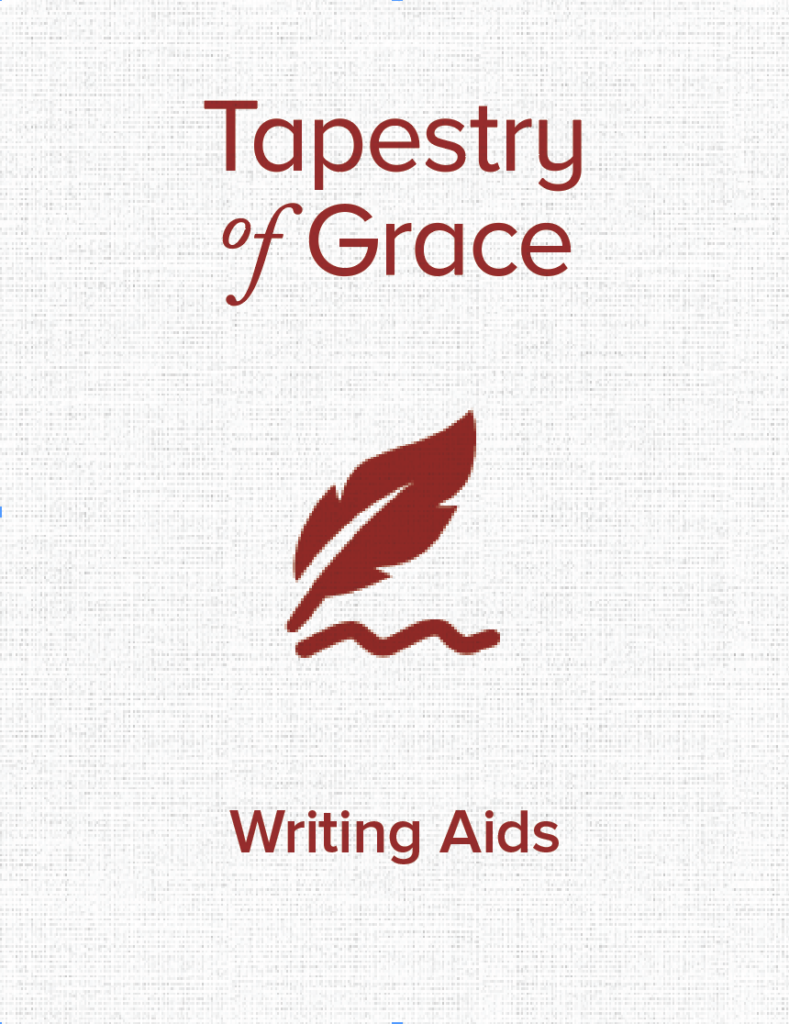
Writing Aids: A comprehensive teacher’s manual, grading rubrics, and student explanation pages for writing genres. | Years 1-4 | Grades K-12 | $40 – $60
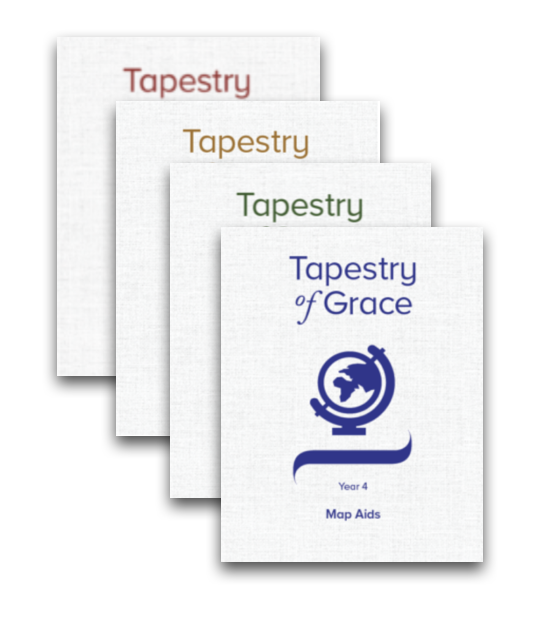
Map Aids: Student maps and teacher answer key maps that can be purchased as a supplement for Integrated but come for free with the corresponding levels of Spools Geography or Spools Full Rack. | Years 1-4 | Grades K-12 | $10 – $35
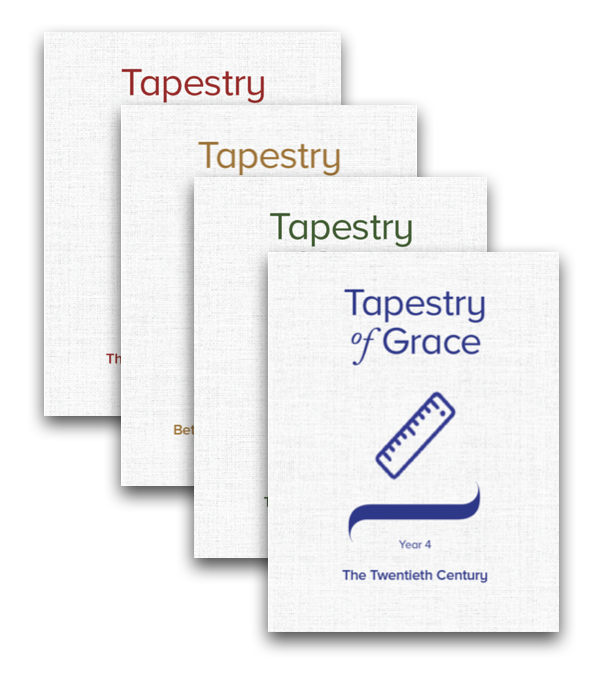
Planning Aids: Reading assignments organized by day according to several different weekly schemes. | Years 1-4 | Grades 1-6 | $12.50
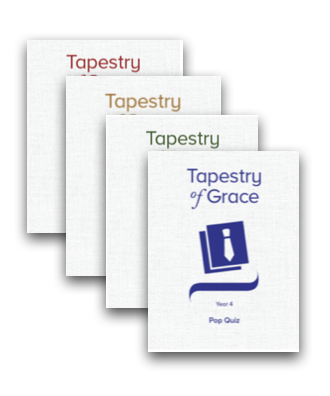
Pop Quiz: Short audio overview of all Tapestry subjects for fathers, with short discussion questions | Years 1-4 | Grades K-12 | $15 – $50
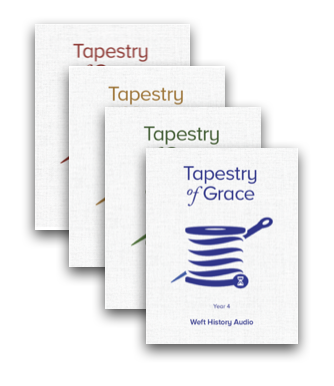
Weft History Audio: A history audio overview with funny voices and characters. | Years 1-4 | Grades K-6 | $10 – $35
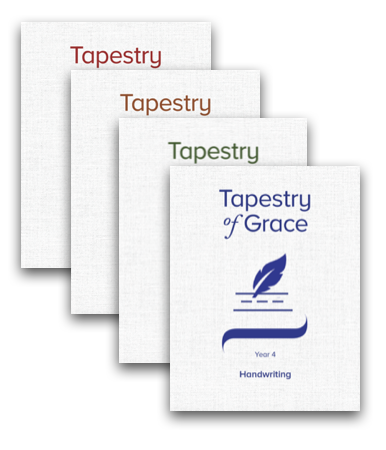
Handwriting: Print and cursive practice pages using history vocabulary words. | Years 1-4 | Grades K-3 | $5 – $15
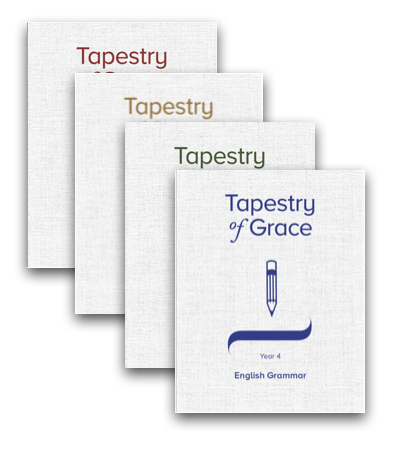
English Grammar: History-based grammar lessons and exercises, with answer keys, that can be used either to teach or review English Grammar at any age. | Years 1-4 | Grades 4-6 | $15 – $30
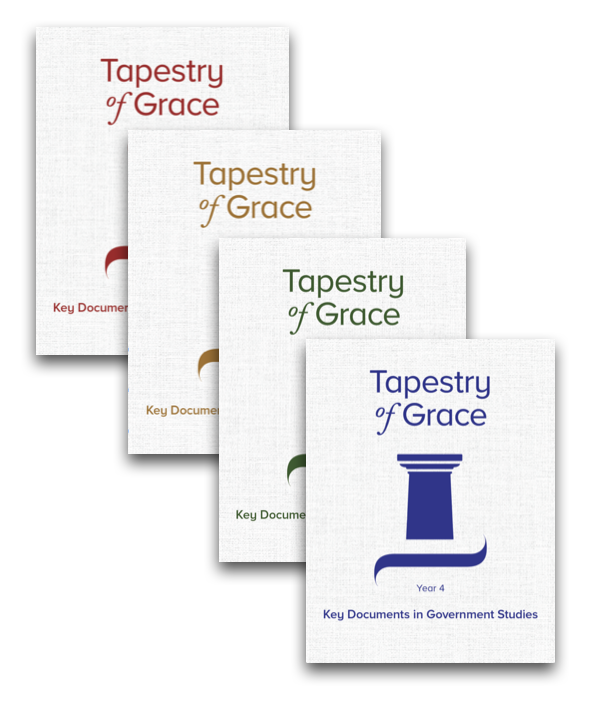
Key Documents in Government Studies: excerpts from primary source documents in political theory and history. | Years 1-4 | Grades 10-12 | $15
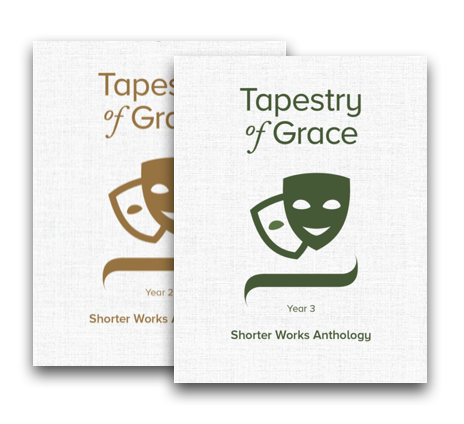
Shorter Works Anthologies: classic literary texts, primarily poems, short stories, and plays, reformatted and annotated for Tapestry of Grace students. | Grades 10-12* | $25
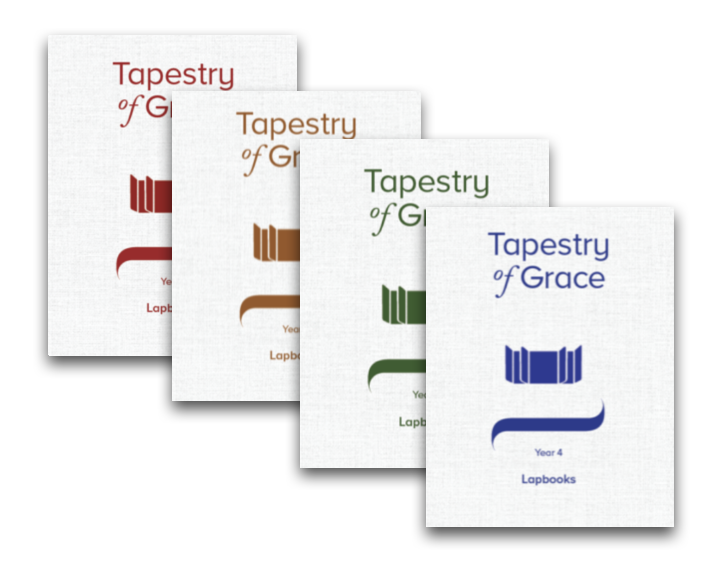
Lapbooks: A colorful nine-week hands-on activity available as digital or printed kits | all sixteen units | Grades K-6 | $15 – $65
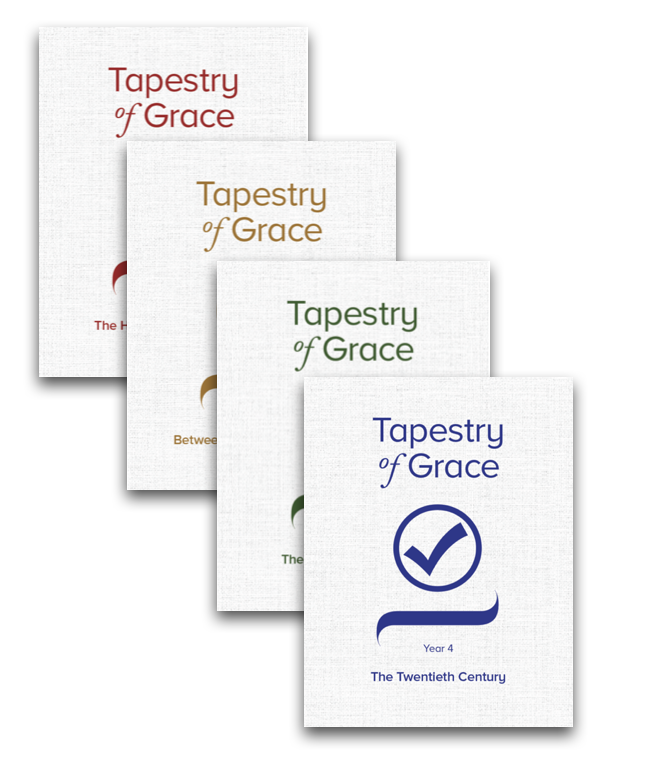
Evaluations: weekly quizzes and tests, with both student and teacher versions, sample answers and answer keys, and unit tests for some levels. The subjects covered are history and (for some levels) literature. | Grades 1-12 | $10 – $15
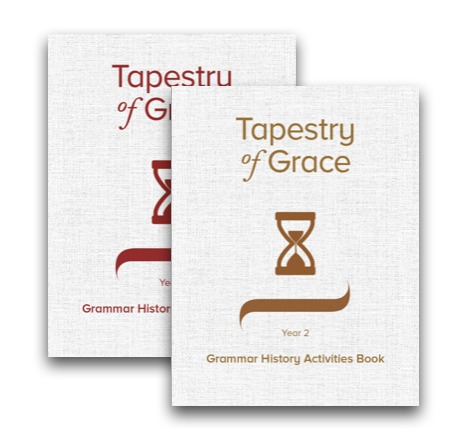
Grammar History Activities: over 100 pages of coloring, connect-the-dots, matching, sequencing, mazes, and some mapwork, covering most weeks in Years 1 and 2 for Lower Grammar students (and, we suspect, for some Upper Grammar students as well). | Grades 1-6 | $15 – $20
What is this “Primer” thing I’ve heard about?
Tapestry’s Primer is a gentle K-1 introduction to the full Integrated Tapestry curriculum. The Guidebook component of Primer also works well as a history “refresher course” for parents just beginning to homeschool. Primer is written to be interactive and easy-paced, offering a simple, conversational, hands-on and game-oriented approach to history. It introduces users to the joys of story-driven learning, integrated humanities studies, and full family education while taking them through a survey of the full sweep of human history.
Primer is made up of twelve mini-units, with three “topics” each. Each topic is used over the course of one week, thus constituting enough material in History, Literature, Geography, Memory Work, and Activities for one school year. Alternatively, many users spread each topic over two weeks and use Primer over a two-year time span.
Primer Mini-Unit Titles:
- Mini-Unit 1: Eden to Egypt
- Mini-Unit 2: Tabernacle and Temple
- Mini-Unit 3: Daniel’s Revelation
- Mini-Unit 4: Christ and the Church
- Mini-Unit 5: The Broken Road
- Mini-Unit 6: Recovery and Discovery
- Mini-Unit 7: A New World
- Mini-Unit 8: One Nation
- Mini-Unit 9: Growing Pains
- Mini-Unit 10: A House Divided
- Mini-Unit 11: Engines of Empires
- Mini-Unit 12: A Smaller World
Look under “Primer” and “Free Samples” in our shop to read product descriptions, or to download and try it out.

Frequently Asked Questions III: Cost
What’s the catch?
Maybe all this sounds great to you, and if so, I’m glad! Many people who choose Tapestry, and almost all who stay with it, say they do so because it offers a rich and enjoyable education. However, in this world there are opportunity costs, and I want to make sure you understand those too before we move on. Tapestry‘s opportunity costs come in three shapes that I’m sure you will recognize: time, attention, and money.
Time Costs
This is the one that catches a few of our new customers off-guard every year. A robust and diverse education sounds as wonderful as a five-star restaurant buffet, but much time is required for sorting, choosing, organizing, evaluating, preparing, and optimizing, especially at first! It will cost you time to develop your skills and meal-making process. How much time? That depends on many factors, but the cost will be real—as much as two hours per week if you are on your early steep learning curve with a large family completing many of our subjects—and we urge you to consider this before purchasing a copy of Tapestry.
On the bright side, we have found that practice makes ease, and experience makes efficiency. Many of our customers report that they see their planning time dramatically decrease as they become comfortable with Tapestry. To help with this process, we offer you extensive samples (to try before you buy!). a variety of planning helps, a staff dedicated to helping you succeed, and an encouraging, tip-sharing community.
Attention Costs
Tapestry requires not only time, but also attention from teaching parents. Our Teacher’s Notes are extensive and packed with useful information, but for that very reason you will need to save enough attention (perhaps often at the end of a long day!) to read, understand, and apply them in the way that is best suited to your family.
On the bright side, one of the distinct benefits of Tapestry is the fact that you will rotate through four years several times if you stick with it. Repetition produces both depth and confidence! Also, if your children are young enough to have several rotations ahead, they will also be starting with simpler books and concepts.
Money Costs
In homeschooling, there is a big trade-off. Choosing to stay at home and educate your children means, for many, choosing a single income and the budget that comes with it. Speaking as a homeschooled child, I am tremendously grateful for the choices my parents made so that my mother could be my primary teacher: the benefits for myself and my six siblings have been, simply, priceless. However, now that I am an adult, I am more aware that they came at a stiff price for my parents.
On the bright side, we have worked to make Tapestry available in several formats that help to spread out its cost. As is common, an up-front and in-bulk purchase (our Integrated Tapestry product) is the cheapest option in the long term. However, it is a financial stretch for some families to spend so much up-front. Therefore, we now offer Tapestry in smaller, less expensive packages as well, so that families are more more able spread out their costs and also able to purchase the elements they find most useful.
Where else can I go if you just lost me?
Are you thinking “Ew, no”? If so, feel free to read on, but Tapestry of Grace may not be for you. It’s wonderful to know that now rather than later, isn’t it? We wish you the best in finding a program that is right for your goals, and we warmly recommend Cathy Duffy’s page as an excellent way to continue your search!
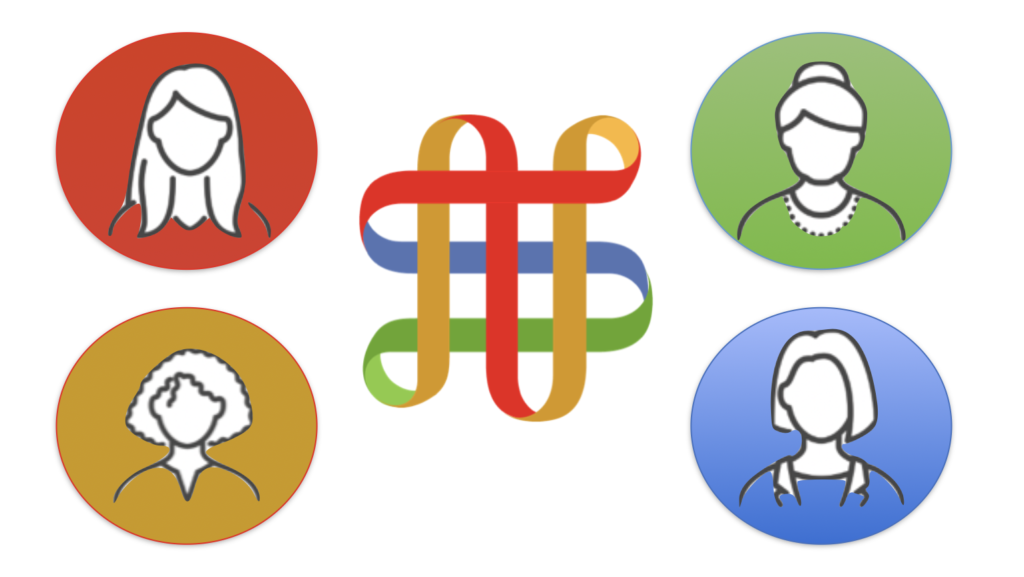
Frequently Asked Questions IV: Community
At any given time during the last twenty years, we estimate that several thousand persons worldwide are using Tapestry of Grace. We have so loved watching this rich, colorful, and multi-dimensional community grow! Our users tend to be passionate about education, honest about their experience with Tapestry, and full of good ideas. They are also true teachers: they love to answer questions.
To visit them, open the Community page and start exploring. You will find presentation specialists, Facebook groups, Instagram, YouTube, and a blog stuffed with articles (IN TRANSIT FROM OUR OLD WEBSITE).
Frequently Asked Questions IV: Buying Decisions
Are there terms and conditions?
Yes, and you should read them carefully! For example, some of our products are available only in a digital format that cannot be resold (with or without a convenience printout, which also cannot be resold). Others are available in a print (or CD) format that can be resold.
Please read our Terms and Conditions page carefully before making your buying decisions, and note that you must agree to these terms in order to checkout. If, after purchase, you attempt to resell an item contrary to the terms laid out in that page, you will be liable to at least the full penalties also listed there.
If you have any questions or concerns about our terms and conditions of purchase, please contact us! We will be happy to explain further.
Do I just download my digital products after purchase, or….?
Definitely “or”! We quickly learned that putting your documents in a downloads section of your account page is a recipe for disaster. Particularly if you purchased Integrated or Spools products, that account page cannot neatly organize your dozens of Tapestry of Grace documents!
Our community asked us for a solution, and we created an online organization system called TOGO, as in “Tapestry of Grace Online” or “Tapestry to go.” This is the dashboard interface designed to keep all your Lampstand Press purchases organized, accessible, and integrated. You can use the Help button (or your nearest Presentation Specialist) to set up a personal tour of TOGO.
For those of you who want to try it without the training wheels, a few notes….
We include simple directions to your products on TOGO in your order receipt, so that is one good way to begin learning your way around.
Once you are on the website, please remember that you must be signed in to your account to see your digital products!
The Navigation Video will show you how to find your digital products on TOGO and get the most from our website.
If you have trouble accessing anything, just open a ticket via the Help button in the lower-right hand corner for this page, and let us know!
THE LAST RESORT: If the TOGO organization system isn’t for you, that’s okay! You can ask us to “Digify” your order, which means that we will use our backup system to help you bypass TOGO and receive a “data dump” of your digital documents.
Any time-sensitive thoughts for the upcoming school year?
The most up-to-date Integrated Tapestry of Grace edition for this school year will be the 2020 edition. (Please note: new purchasers may also explore our Work/Study program to exchange labor for an upgrade. If this interests you, please open a ticket using the Help button and send us an inquiry.)
If you have the 2020 Edition of Integrated Tapestry and wish to purchase Spools Student Manuals, we recommend the 2020 Edition of Spools. The 2021 Edition of Spools Student Manual can be used with the 2020 Edition of of Integrated Tapestry, but will include History questions at the Grammar levels for which the 2020 Edition of Integrated Tapestry has no answers. 2021 Spools Teacher Manuals will include History questions and answers that do not correspond to the 2020 Edition of Integrated Tapestry of Grace. Also, 2021 Spools Student Manuals and Teacher Manuals will include updated vocabulary that does not match the 2020 Edition of Integrated Tapestry of Grace. You can explore all the differences between Integrated and Spools editions here.
If you are only interested in the Grammar History questions (without answers), you can purchase the Weft History Audio, which comes with some of the same Grammar History questions for each unit. Alternatively, the same questions are also included with Pop Quiz.
Any exciting new products I should know about?
You can view our Production Calendar on the Announcements page for more information about upcoming products. We recommend checking back there at least once a month, or signing up for our monthly newsletter, or both. The Presentation Specialists will also make sure you know about any upcoming products that might fit your specific needs!
